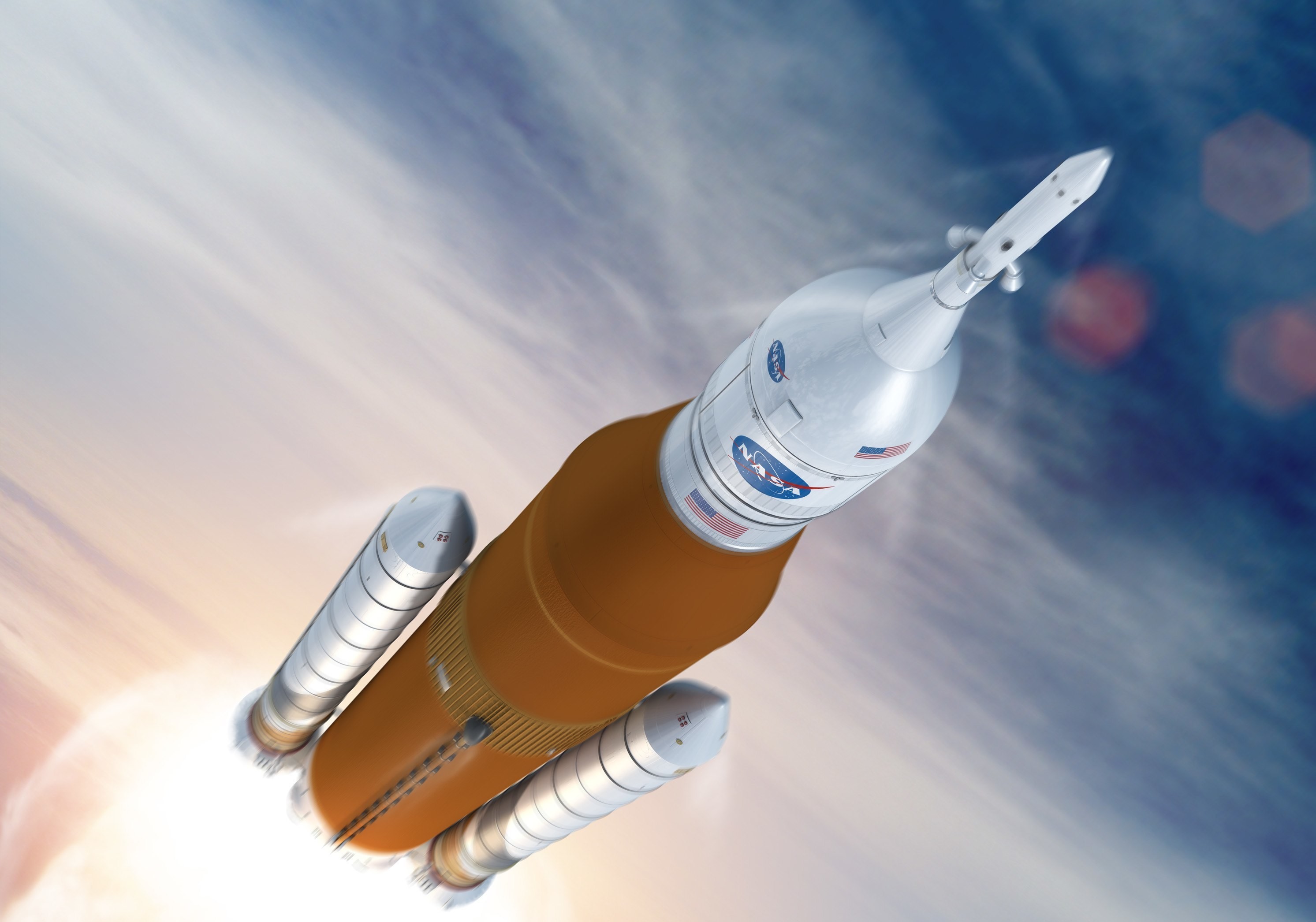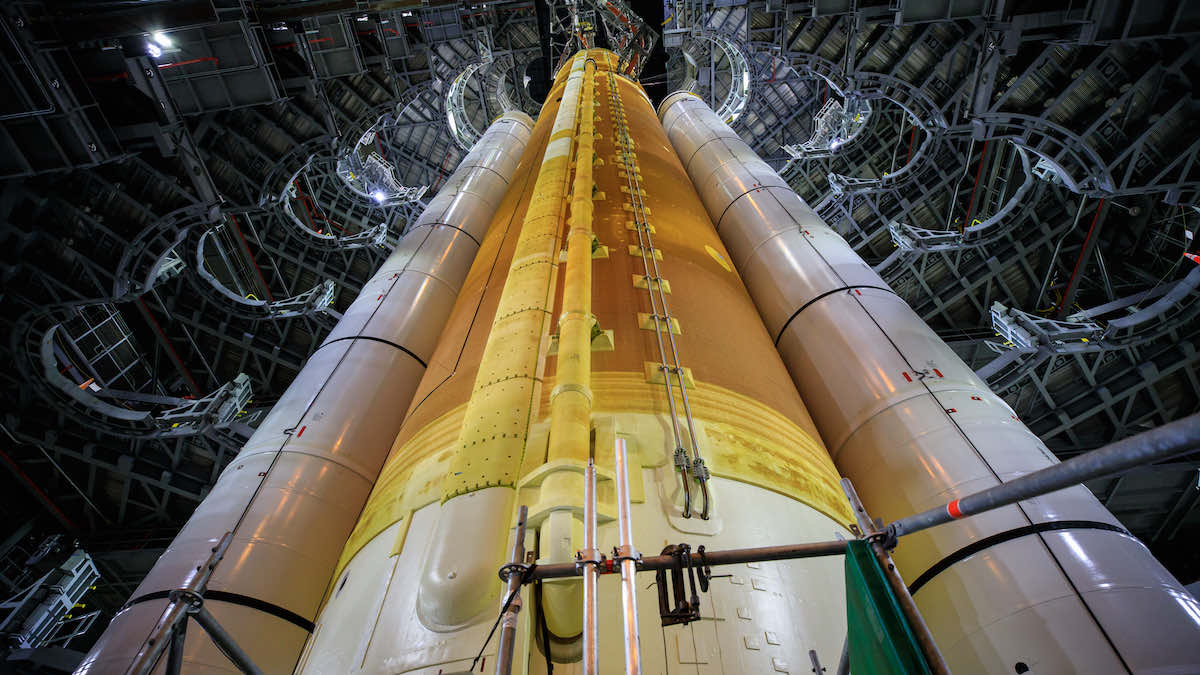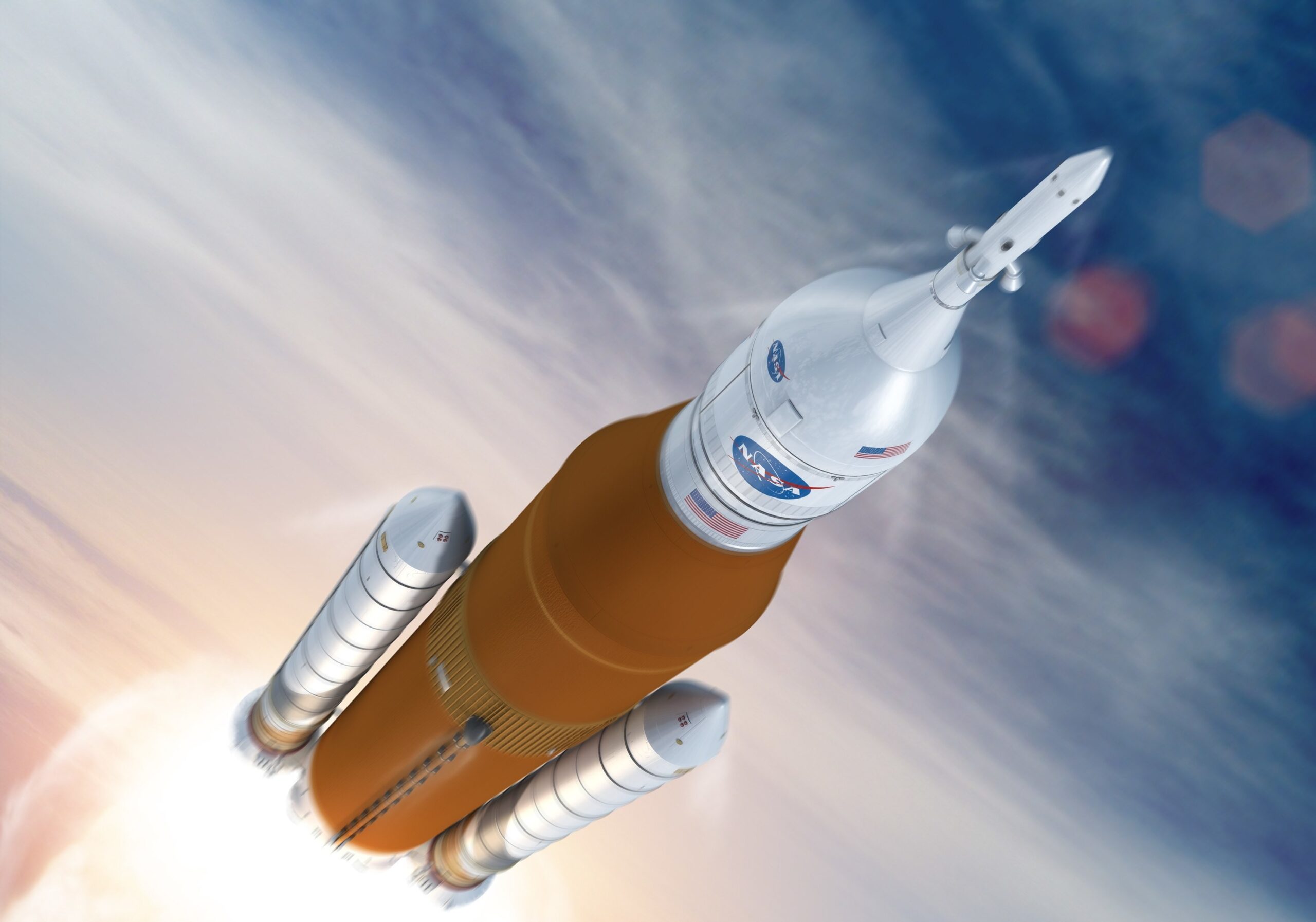
NASA’s Space Launch System Is Getting Very Close To The First Launch
For quite a while now many of us have been patiently waiting for Artemis progress. One of the key components of practically all future Artemis missions has to do with SLS or the Space Launch System. Over the past few months, NASA has been hard at work preparing the launch vehicle for its first-ever launch. Now in March, based on information from NASA and more, we can expect a launch attempt very soon.
This first launch attempt is named Artemis 1 and consists of an uncrewed SLS spacecraft taking off and launching Orion hundreds of thousands of miles away. This is meant to test not only SLS and Orion but the ground systems and long lists of necessary processes that are involved. Most recently pads surrounding SLS have been retracted as it prepares for rollout to the launch pad.
The Space Launch System is one of the biggest and most powerful rockets in the world. Not to mention this initial uncrewed mission is planning to send Orion further than any spacecraft built for humans has ever flown. Prior to this launch, NASA is working to ensure each aspect of the mission is perfect. Here I will go more in-depth into the recent updates provided by NASA and when we can expect to see SLS take off for the first time ever.
Recent Updates

NASA has been very busy over the past few months especially working to assemble and test each aspect of the Space Launch System and more. Thankfully, the agency has been providing updates throughout this process to keep the public updated on how close to the first SLS launch we are. Most recently on March 7th, NASA tweeted saying “Our Moon rocket is getting ready to roll! Platform B surrounding NASA’s SLS & @NASA_Orion has been retracted in High Bay 3 of the Vehicle Assembly Building in preparation for roll out to Launch Pad 39B for #Artemis I.” This included an image of the fully stacked Space Launch System surrounded by different platforms. Just hours ago however NASA provided another update in a tweet mentioning, “Half of Platform C in High Bay 3 of the Vehicle Assembly Building is now retracted, continuing to reveal more of @NASA_SLS & @NASA_Orion.” As of right now, NASA is working to expose SLS and prep the massive rocket for roll out to the launch pad. Specifically, teams are retracting some of the 20 platforms surrounding the Space Launch System rocket and Orion spacecraft that allows work on the integrated system in High Bay 3 inside the Vehicle Assembly Building at NASA’s Kennedy Space Center in Florida. The first platforms to be retracted – which move like hydraulic kitchen drawers when moved – are those located near the launch abort system on Orion in preparation for rollout to Launch Complex 39B for the Artemis I wet dress rehearsal. Not only this, but teams are continuing to install instrumentation on the SLS’s twin solid rocket boosters inside the VAB.
Thousands of sensors and special instruments will monitor the rocket and spacecraft as they roll out for the first time on March 17 and make the four-mile journey to Launch Complex 39B, arriving on March 18. Engineers will capture as much data as possible on the performance of all the systems that are part of the rocket, spacecraft, ground systems used for rollout, and on the pad for propellant loading and other activities. Once all the rocket and spacecraft systems are inspected, the 322-foot-tall rocket will roll to the launch pad for the wet dress rehearsal test, which is scheduled to occur approximately two weeks after it arrives to 39B. The last steps remaining before rollout include inspecting each piece of the rocket and spacecraft, including physically entering different components of SLS and, step-by-step, making sure SLS and Orion are ready for the trip to the launch pad. As inspections continue, the Kennedy ground systems team is working to remove equipment and scaffolding away from the rocket and will continue retracting the platforms until the entire rocket is revealed. This process is somewhat meticulous and marks some of the final close inspections made to SLS prior to rolling out and eventually the first launch.
Mission & Launch Date

Now that we know the most recent progress NASA has been making, we can take a closer look at an accurate launch date estimate along with the plan for this Artemis 1 mission. I mentioned prior some expected dates regarding key stages in this launch. This includes the expected roll out date on March 17th with a planned arrival on March 18th. I also pointed out that the wet dress rehearsal is scheduled to occur around two weeks after it arrives at the pad. This would be around the first day of April. Based on current progress and what NASA has said, we can expect to see SLS take off for the first time in May. By then the rocket will have been rolled out, tested, and prepped for a test flight. Artemis 1 is the first test of the Space Launch System, Orion capsule, and Kennedy ground systems. Specifically, this mission is the first in a series of increasingly complex missions, starting with an uncrewed flight test that will provide a foundation for human deep space exploration, and demonstrate NASA’s commitment and capability to extend human existence to the Moon and beyond.
During this flight, the spacecraft will launch on one of the most powerful rockets in the world and fly farther than any spacecraft built for humans has ever flown. It will travel 280,000 miles from Earth, thousands of miles beyond the Moon over the course of about a four to six-week mission. Orion will stay in space longer than any ship for astronauts has done without docking to a space station and return home faster and hotter than ever before. As Orion continues on its path from Earth’s orbit to the Moon, it will be propelled by a service module provided by the European Space Agency, which will supply the spacecraft’s main propulsion system and power. Orion will pass through the Van Allen radiation belts, fly past the Global Positioning System satellite constellation and above communication satellites in Earth orbit. To talk with mission control in Houston, Orion will switch from NASA’s Tracking and Data Relay Satellites system and communicate through the Deep Space Network. From here, Orion will continue to demonstrate its unique design to navigate, communicate, and operate in a deep space environment. All of this before attempting to safely re-enter Earth’s atmosphere and land on the surface.
Conclusion
Many of us have been waiting a very long time for significant progress related to Artemis. Now after constant testing, development, and more, the first SLS test flight is just around the corner. Most recently NASA has been announcing the final steps in place for the Space Launch System rollout. Specifically, the large number of platforms surrounding the stacked spacecraft are being retracted as we speak. This first flight is immensely important and the first step in returning humans to the Moon. We will have to wait and see how Artemis 1 progresses and the impact it has on the space industry.
